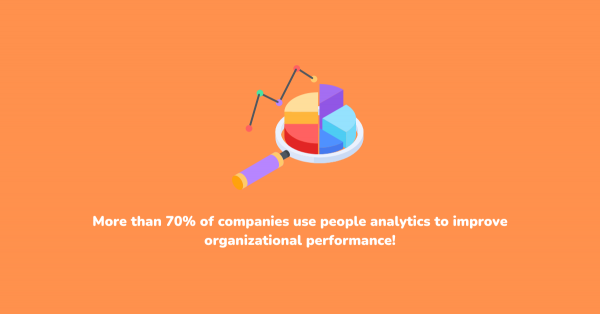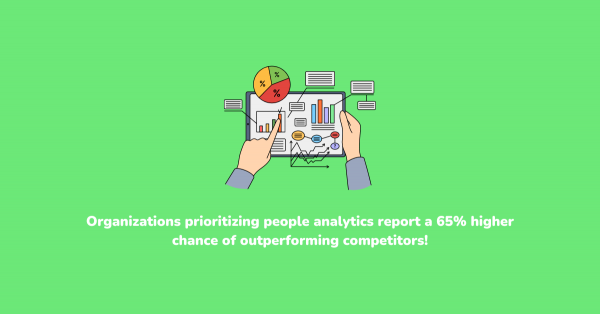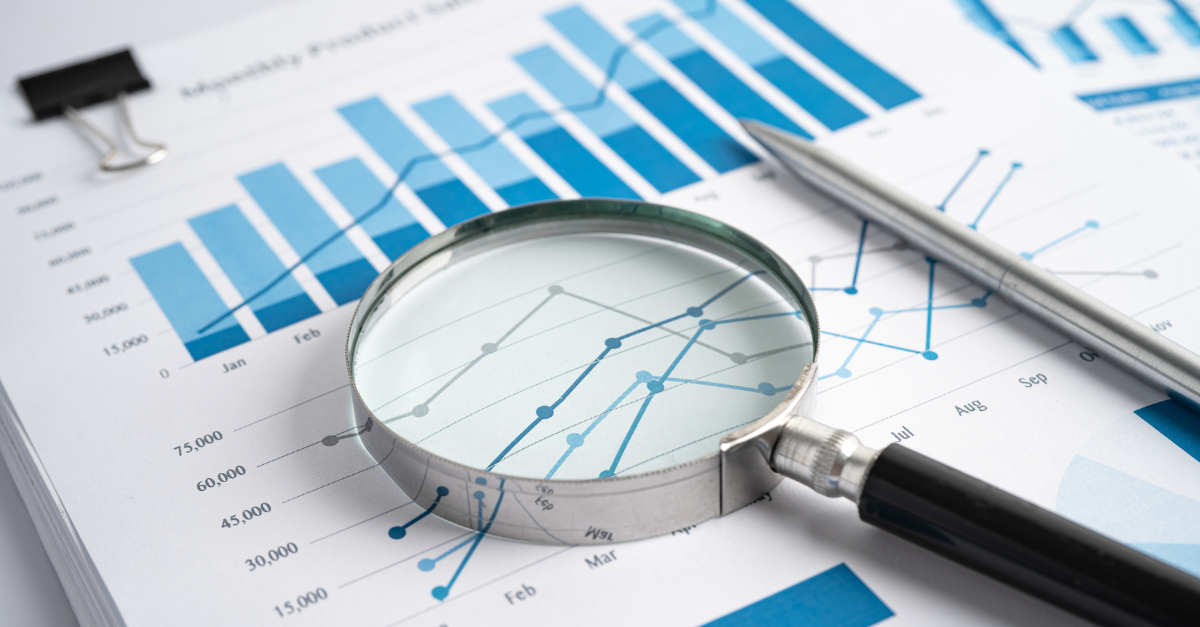In today's data-driven business landscape, the ability to harness insights from information is paramount. Organizations are increasingly recognizing the value of leveraging data to understand and optimize their most critical asset: their people. People analytics, a subset of HR analytics, is emerging as a strategic function that transforms raw HR data into actionable insights.
But what exactly is people analytics? At its core, it's the systematic process of collecting, analyzing, and interpreting human resource data to drive business decisions. By quantifying and measuring various aspects of the workforce, organizations can uncover patterns, trends, and correlations that inform strategic initiatives.
Unlike traditional human resource metrics that focus on operational efficiency, HR data delves deeper into the human capital side of the business. It seeks to understand the impact of HR practices on employee performance, engagement, and overall organizational success. By moving beyond anecdotal evidence and gut feelings, it provides a data-driven foundation for making informed decisions.
The benefits of implementing analytics are enormous. It empowers organizations to identify top talent, optimize workforce analysis, enhance employee engagement, and ultimately improve business performance. By understanding employee behavior, preferences, and performance, organizations can create a more productive and fulfilling work environment.
However, the journey to becoming an analytics-driven organization is not without its challenges. Overcoming resistance to change, ensuring data quality, and developing a data-literate workforce are essential steps in the process.
What is People Analytics?
HR data is a multifaceted discipline that involves several interconnected components working in harmony. To unlock the full potential of HR data, organizations must focus on these essential elements.
Data Collection
The foundation of any HR data initiative is robust data collection. It involves gathering relevant human resource data from various sources, including HR information systems, performance management systems, employee surveys, and external databases. This data can encompass a wide range of information, such as employee demographics, performance metrics, attrition rates, engagement scores, compensation data, and training records.
To ensure data quality and accuracy, organizations must establish clear data collection processes and implement data governance practices. This includes data cleaning, validation, and standardization to eliminate inconsistencies and errors.
Data Analysis
Once the data is collected and cleaned, the next step is to analyze it to extract meaningful insights. This involves applying statistical and analytical techniques to explore patterns, trends, and relationships within the HR data. Descriptive analytics can be used to summarize and describe the data, while predictive analytics can help forecast future trends and outcomes. Prescriptive analytics goes a step further by recommending potential actions based on the data analysis.
Advanced analytical tools and techniques, such as data mining, machine learning, and artificial intelligence, can be employed to uncover hidden patterns and generate more sophisticated insights.
Data Visualization
Presenting complex HR data in a visually appealing and understandable format is crucial for effective communication. Data visualization techniques, such as charts, graphs, and dashboards, can be used to transform raw data into actionable insights. By leveraging visual representations, organizations can effectively communicate HR data findings to stakeholders at all levels, from HR professionals to executive leadership.
Actionable Insights
The ultimate goal of HR data is to generate actionable insights that drive business decisions. By analyzing HR data, organizations can identify opportunities for improvement, optimize HR processes, and enhance employee performance. These insights can be used to inform talent acquisition, development, retention, and succession planning strategies.
To maximize the value of HR analytics, organizations must establish a clear link between data-driven insights and business outcomes. This involves translating findings into specific recommendations and implementing changes based on the evidence.
By focusing on these key components, organizations can build a strong foundation for their HR analytics initiatives and unlock the full potential of their human resource data.
Benefits of HR Analytics

The potential impact of HR analytics on organizations is immense. By leveraging HR data to derive actionable insights, businesses can reap a multitude of benefits that contribute to overall success.
Improved Decision Making
Human resource analytics provides a data-driven foundation for making informed decisions across the entire organization. By quantifying and measuring various aspects of the workforce, organizations can identify patterns, trends, and correlations that inform strategic initiatives. For example, human resource analytics can help optimize workforce planning, identify high-potential employees, and allocate resources effectively.
By understanding the relationship between employee performance and business outcomes, organizations can make data-driven decisions about talent management, compensation, and reward systems. Additionally, human resource analytics can help identify areas where investments in employee development will yield the highest return on investment (ROI).
Enhanced Employee Experience
A positive employee experience is essential for attracting, engaging, and retaining top talent. Human resource analytics can help organizations create a more employee-centric workplace by providing insights into employee needs, preferences, and behaviors. By analyzing employee survey data, performance metrics, and attrition rates, organizations can identify areas for improvement and implement targeted initiatives to enhance employee satisfaction and well-being.
Furthermore, human resource analytics can help organizations understand the factors that drive employee engagement and productivity. By identifying key drivers of engagement, organizations can develop strategies to foster a more positive and motivating work environment.
Optimized Workforce Planning
Effective workforce planning is critical for organizational success. Analytics in HR provides valuable insights into workforce trends, such as demographics, skills, and performance reviews. By analyzing HR data, organizations can identify potential talent shortages, skill gaps, and succession planning needs.
Moreover, analytics in HR can help optimize workforce utilization by identifying areas of overstaffing and understaffing. This information can be used to make informed decisions about hiring, training, and redeployment of employees. By aligning workforce planning with business objectives, organizations can ensure they have the right people with the right skills in the right places at the right time.
Increased Organizational Performance
The ultimate goal of analytics in HR is to drive business performance. By leveraging HR data to understand the link between human capital and organizational outcomes, businesses can make data-driven decisions that improve efficiency, productivity, and profitability.
For example, analytics can help identify high-performing teams and understand the factors contributing to their success. By replicating these best practices, organizations can improve overall performance. Additionally, analytics can help measure the impact of HR initiatives on business outcomes, providing a clear ROI for HR investments.
Risk Mitigation
Analytics in HR can help organizations identify and mitigate potential risks. By analyzing HR data, businesses can identify areas of vulnerability, such as high turnover rates, low employee engagement, or discrimination issues. By proactively addressing these risks, organizations can protect their reputation, reduce costs, and improve employee morale.
Furthermore, analytics can help organizations comply with employment regulations and avoid legal issues. By understanding the demographics of the workforce and monitoring HR metrics, organizations can identify potential areas of non-compliance and take corrective action.
The benefits of = analytics are far-reaching and can have a significant impact on an organization's success. By leveraging HR data to drive informed decision-making, organizations can create a more engaged workforce, optimize operations, and achieve their strategic goals.
Challenges and Considerations in Analytics in HR
Implementing human resource metrics is a complex undertaking that requires careful planning and execution. Organizations may encounter various obstacles in their journey to becoming data-driven. Addressing these challenges is crucial for the successful adoption of analytics.
- Data Quality and Accessibility - High-quality, accessible HR data is the cornerstone of effective human resource metrics. However, organizations often grapple with data inconsistencies, errors, and missing information. To address these issues, robust data governance practices must be established, including data cleaning, validation, and standardization processes. Additionally, investing in data management tools and technologies can help improve data quality and accessibility.
Moreover, integrating data from various sources, such as HR information systems, performance management systems, and employee surveys, can be challenging. Organizations must develop effective data integration strategies to create a unified view of the workforce.
- Building a Data-Driven Culture - Cultivating a data-driven culture is essential for the successful implementation of human resource metrics. This involves fostering a mindset where data is valued, trusted, and used to inform decision-making. Overcoming resistance to change and building data literacy among employees at all levels is crucial.
Organizations can promote a data-driven culture by providing training and development opportunities, encouraging data-driven storytelling, and recognizing and rewarding data-driven successes. Additionally, creating a collaborative environment where HR and business leaders work together to leverage data can accelerate the cultural shift.
- Privacy and Security - Handling sensitive human resource data requires stringent privacy and security measures. Organizations must comply with data protection regulations, such as GDPR and CCPA, to safeguard employee information. Implementing robust security measures, including data encryption, access controls, and regular security audits, is essential to protect against data breaches.
Balancing the need for data-driven insights with privacy concerns is a delicate task. Organizations must find ways to extract valuable information from HR data while maintaining confidentiality. This may involve anonymizing data, using data masking techniques, or obtaining employee consent for specific data uses.
- Integration with Business Strategy - To maximize the value of human resource metrics, it must be aligned with the overall business strategy. This requires close collaboration between HR and business leaders to identify key performance indicators (KPIs) and translate business objectives into actionable analytic questions.
Organizations should establish a clear link between analytics insights and business outcomes. By demonstrating the impact of data-driven decisions on the bottom line, it is easier to secure buy-in and support for analytics initiatives.
- Talent and Skills - Implementing analytics requires a skilled workforce with expertise in data analysis, statistics, and HR. Organizations may need to invest in talent acquisition and development to build the necessary capabilities. This includes hiring data analysts, data scientists, and HR professionals with strong analytical skills.
Additionally, upskilling existing HR professionals to develop data literacy is essential. Providing training programs on data analysis, visualization, and storytelling can empower HR teams to leverage data effectively.
- Technology and Infrastructure - The success of analytics depends on the availability of appropriate technology and infrastructure. Organizations need to invest in data management, analytics, and visualization tools. Cloud-based solutions can offer scalability, flexibility, and cost-effectiveness.
Integrating these tools with existing HR systems can be complex. Organizations may need to consider implementing a human capital management (HCM) system that provides a centralized platform for HR data and analytics.
By addressing these challenges and investing in the necessary resources, organizations can build a strong foundation for analytics and unlock its full potential.
Human Resource Metrics and HR Software

The cornerstone of effective human resource data is access to accurate, comprehensive, and up-to-date HR data. This is where Human Resource Management Systems (HRMS) prove invaluable. A robust HRMS serves as a centralized repository for a wide range of employee information, from personal details and employment history to performance metrics and compensation data.
HRMS as a Data Foundation
An HRMS provides a structured framework for collecting, storing, and managing HR data. This centralized platform ensures data consistency, accuracy, and accessibility. With a well-implemented HRMS, organizations can streamline data collection processes, reduce manual data entry errors, and eliminate inconsistencies across different HR functions.
By consolidating HR data into a single system, HR professionals can easily access and analyze information. This enables them to identify trends, patterns, and correlations that would be challenging to uncover using disparate data sources. Additionally, an HRMS often includes built-in reporting and analytics capabilities, providing basic insights into the workforce.
Enhancing Data Quality and Accessibility
A key challenge in human resource data is data quality. HRMS can play a crucial role in addressing this issue. By enforcing data standards and validation rules, HRMS helps ensure data accuracy and consistency. Regular data cleaning and maintenance activities can further improve data quality.
Moreover, HRMS platforms often provide features for data enrichment, allowing organizations to supplement core HR data with external information sources. This can enhance the depth and breadth of human resource data insights.
Facilitating Data Analysis
While HRMS provides a foundation for human resource data, advanced data analysis often requires specialized tools and techniques. However, many modern HRMS solutions offer built-in analytics capabilities, enabling users to generate basic reports and visualizations.
These analytics features can provide valuable insights into key HR metrics, such as turnover rates, time-to-hire, and employee satisfaction. However, for more complex analyses and predictive modeling, organizations may need to integrate their HRMS with specialized analytics software or platforms.
Supporting Data-Driven Decision Making
An HRMS that seamlessly integrates with other enterprise systems, such as performance management, talent management, and payroll systems, can provide a holistic view of the workforce. This integrated data environment enables organizations to identify relationships between different HR functions and their impact on business outcomes.
By supporting data-driven decision-making, HRMS can help organizations optimize talent management processes, improve employee engagement, and enhance overall organizational performance. For example, by analyzing employee performance data, organizations can identify training needs, reward high performers, and address performance issues.
Considerations for HRMS Selection
When selecting an HRMS for human resource data, organizations should consider the following factors:
- Data Capabilities - Evaluate the system's ability to collect, store, and manage the necessary HR data.
- Analytics Functionality - Assess the built-in analytics features and reporting capabilities.
- Integration Capabilities - Consider the system's ability to integrate with other HR systems and enterprise applications.
- Scalability - Ensure the HRMS can accommodate future growth and changes in the workforce.
- User Experience - Evaluate the system's user-friendliness and ease of use for both HR professionals and employees.
- Data Security - Assess the system's security features to protect sensitive employee information.
By carefully selecting and implementing an HRMS that aligns with human resource data goals, organizations can lay a strong foundation for data-driven decision-making and unlock the full potential of their human capital.
Why OrangeHRM?
OrangeHRM's Reporting & Analytics module is a powerful tool that can significantly enhance your people analytics capabilities. With features like custom reports, you can tailor data visualizations to your specific needs, gaining deeper insights into your workforce. Graphical reports offer a clear and visually appealing representation of complex data, making it easier to identify trends and patterns.
The ability to download reports in various formats (PDF, CSV, Excel) allows for further analysis and sharing within your organization. And with scheduled reports, you can automate the generation of reports, ensuring timely access to critical information.
OrangeHRM's Reporting & Analytics module empowers you to make data-driven decisions that drive business growth and improve employee satisfaction.
Book a FREE demo today to explore how OrangeHRM can transform your HR processes.
